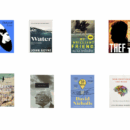How one business overcame a major setback

I’m a great lover of sushi, and many years ago I came across my first kaitenzushi restaurant, in Hamburg of all places. This involves a conveyer belt snaking through an eatery, winding its way past diners. Chefs prepare their offerings in advance and place them in little containers on the belt. Diners look at what’s going past, pick up what they fancy, and pay for what they eat. It’s great fun, especially if there are kids in the party.
Sushi train restaurants picked up around the globe, and one of the most successful was the UK’s YO! Sushi chain, which opened up rapidly in multiple locations. It brought some fun and verve to the conveyor experience, and prided itself not only on the authentically Japanese taste of its food, but on providing a warm and friendly customer experience.
And then, COVID-19 arrived.
I recall sitting at home in the early days of lockdown, pondering what would become of the many types of business that I take an interest in. Restaurants in general took a huge hit as diners stayed away during the pandemic, but I feared most for YO! Sushi, because of the high-contact nature of their offering. Food went around past everyone in the restaurant, was touched and often put back on the belt, to be touched by others…that system seemed done for.
I wondered what YO! Sushi would do to survive. They could of course pivot to takeout, but that would not align with their offering, which was a novelty, high-touch, in-restaurant experience. Would they weather the storm, and after the psychodrama of the prolonged pandemic, would diners ever return to sharing food with strangers?
The early signs were not good. YO! Sushi were forced to close many locations and sent a good chunk of people home. I feared the worst—but I shouldn’t have. Innovative people, you see, keep innovating.
The people at YO! Sushi took the punch in the face, but sat down and gathered their thoughts. Our uniqueness lies in the experience of our conveyor, they thought. Can we really just dismantle that and start over? What will then differentiate us from the huge crowd of regular sushi restaurants? If we move heavily to home delivery, how will we maintain so many locations and people? It was a serious strategic conundrum.
I can confirm, however, that YO! Sushi is alive and kicking. Its belts are still in operation; the system still works. During a recent family visit to one of their outlets, we saw for ourselves how the problem was solved. The answer was simplicity itself. Maintain the conveyor system; but change how customers interact with the food. Instead of sushi being pre-prepared and placed on the belt, let customers order what they want, using a new system.
When we sat down, we scanned a QR code at the table to bring up a menu on our phones. One of us tapped out our order, paid, and received a confirmation. We sat back. A few minutes later, our dishes started arriving, right there on the belt as before. How did we know which ones were ours? Aha, there’s the trick. When our chosen dishes were next to us, the entire belt paused and our table flashed green. We picked up what was ours and ignored everything else. Yet, we still got a peep at what was being ordered by others, which is part of the kaiten experience.
This worked so well that shareholders injected fresh funds to finance the software and hardware overhaul; and the chain is now on a growth path again. The new system, please note, is permanent—it was not a pandemic stop-gap measure. It is more efficient, because it requires less labour and entails less wastage in the kitchen. It also allows more items than just sushi to be offered; indeed, the chain is now called just YO!, and is pivoting again, into supermarket counters with retail partners.
In my own work, something similar happened. In February of 2020, we were forced to suspend our flagship leadership programme. We had a full class, everything was booked and set, and then—bang. There would be no in-person gatherings that year. Our goose, it seemed, was cooked. But we were only despondent for a few days. After that the team picked itself up and looked for a way forward. We taught ourselves all the necessary digital tricks and reopened the programme as a virtual incarnation for that year. The entire class cohort signed on for this pivot; and even graduated virtually after a year! Now, our post-pandemic offering is hybrid; we are back in person, of course; but we are not abandoning the tricks we learned in troubled times. We are more efficient and can offer an enhanced experience as a result.
There are wider lessons about strategy and innovation at play here. Let me share them with you next week on this page. I look forward to your company as we unpack who keeps innovating, and why.
(Sunday Nation, 20 November 2022)

Buy Sunny Bindra's new book
The X in CX
here »
Popular Posts
- Make this your year of being boringJanuary 4, 2026
- My books of the yearDecember 14, 2025
- Confessions of an explaining personDecember 7, 2025
- Here’s why you should become foolishNovember 30, 2025
- How to listen, really listenNovember 16, 2025















